#Principality of Iberia
Explore tagged Tumblr posts
Text

Sts. Archil and Luarsab.
#kingdom of georgia#King of Kartli and Kakheti#ქართლის სამეფო#ბაგრატიონი#bagration#saints#orthodox church#საქართველოს სამეფო#Sakartvelos samepo#royalty#House of Mihran#Chosroid dynasty#Archil of Kakheti#Principality of Iberia#ქართლის საერისმთავრო
10 notes
·
View notes
Text
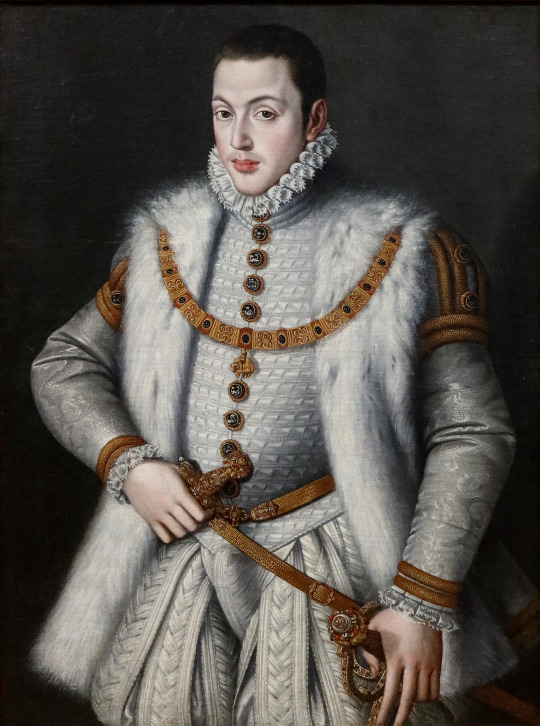
Alonso Sánchez Coello (Spanish, 1532-1588) Portrait of Don Carlos (1545-68), Infant of Spain, son of Philip II of Spain, n.d. Lobkowicz Collections, Nelahozeves Castle, Czech Republic
#Alonso Sánchez Coello#Alonso Sanchez Coello#spanish artist#spanish art#el principe carlos#art#fine art#european art#classical art#europe#european#fine arts#oil painting#europa#mediterranean#iberia#iberian#1500s#male portrait#Prince#royal#royalty
14 notes
·
View notes
Text
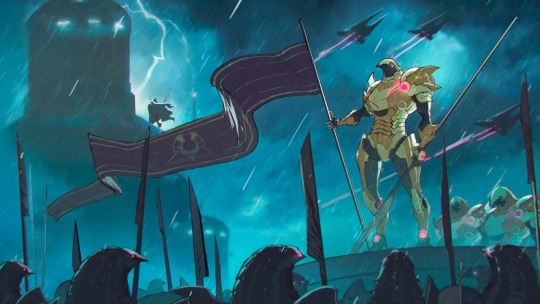
Video Game Flag Wars: Round 1
Now that the National Pride Fusion Flag Wars has ended, we can return to the Video Game Flag Wars! The prelims decided which flag would represent each series, so now the tournament contains one flag per series. This does not include mods and fangames, as there are multiple flags from Hearts of Iron mods and Roblox games in the tournament. As there are so many flags even after the prelims, there will be 32 polls in the first round rather than the usual 16. Let me know what flag you want to win! See the brackets below.
Round 1:
1. Crimson Cult Banner (Thaumcraft) vs. Flag (Roblox BedWars) vs. Salmon Run Flag (Splatoon)
2. Unnamed Flag (Lego City Undercover) vs. Atlantic Federation (Valkyria Chronicles) vs. Homestead Banner (Palia)
3. Middle Eastern Alliance (Squad) vs. Shadowkin (Raid: Shadow Legends) vs Bilge Rat Adventures Flag (Sea of Thieves)
4. Saker’s Flag (Fable) vs. Novistrana (Republic: The Revolution) vs. Arstotzka (Papers, Please)
5. San Andreas (Grand Theft Auto: San Andreas) vs. Kirin Tor Offensive Banner (World of Warcraft) vs. Alliance of Galactic Travelers (No Man’s Sky)
6. Black Revolt (Kaiserredux) vs. Aquileian Republic (Supremacy) (Equestria at War) vs. Rescue Corps Flag (Pikmin 4)
7. Tropico (Tropico) vs. Sons of Liberty (Metal Gear Solid 2) vs. Commune of Revachol (Disco Elysium)
8. Mawkin Flag (Metroid: Dread) vs. Calchaqui (Europa Universalis 4) vs. Kazan Military Okrug (Thousand-Week Reich)
9. King Dedede’s Flag (Kirby: Triple Deluxe) vs. Meat Flag (Slime Rancher) vs. Flag of the Crown (Cult of the Lamb)
10. Communist Australia (Victoria II) vs. Delian League (Imperator: Rome) vs. Ominous Banner/Illager Banner (Minecraft)
11. Patagonian Worker’s Front (Kaiserreich) vs. Castle Siege (Super Smash Bros.) vs. Yara (Far Cry 6)
12. Stag Beetle Flag (Animal Crossing: New Leaf) vs. Fortnite (Fortnite) vs. Livonia (Arma)
13. Gaul Úr (Red Flood) vs. Strong Badia (Homestar Runner) vs. Super Earth (Helldivers)
14. Alam Melayu (Rise of Nations (Roblox)) vs. Tiki Tak Tribe (Donkey Kong Country Returns) vs. Sea Slide Galaxy (Super Mario Galaxy)
15. Great Lakes Government (Kalterkrieg: Shadow of the Weltkrieg) vs. Principality of Kemerovo (The New Order: Last Days of Europe) vs. Joker Banner (Balatro)
16. Shadow Isles Clash Banner (League of Legends) vs. Rebel Corps, Phantom Thieves Version (Persona 5 Tactica) vs. Antarctica (3D Atlas (1996))
17. Generic Flag (Roblox) vs. Standing Flag (Dragon Blade RPG (Roblox)) vs. Zhu Xi's Legacy (Age of Empires 4)
18. Kitakami (Pokémon Scarlet and Violet) vs. South California (Cyberpunk 2077) vs. Watchers (Overwatch)
19. Avalar (Spyro the Dragon) vs. Union of American People's Republics (Red World) vs. Grey Warden Heraldry (Dragon Age: Inquisition)
20. Eusan Nation (Signalis) vs. Aurelia (Ace Combat) vs. Outer Wilds Ventures (Outer Wilds)
21. Columbia (Bioshock Infinite) vs. Sickle Moon Flag (Legend of Zelda: The Wind Waker) vs. Eggmanland (Sonic Unleashed)
22. The Allied Nations (Command & Conquer: Red Alert 3) vs. The Rebellion (Just Cause 3) vs. Federation of the Americas (Call of Duty: Ghosts)
23. Great Lake Revolutionary Council (Extremis Ultimis) vs. Courland (Empire: Total War) vs. Columbia (Crimson Skies)
24. Pontiac Province (Judgement Day: Aftermath of the Red Flood) vs. Communist Iberia (Hearts of Iron IV) vs. International Workers' Armed Forces (Krasnacht: Twilight of the Gods)
25. New California Republic (Fallout) vs. Deep Hollow Valley (Night in the Woods) vs. Victory Flag (Fall Guys)
26. Zheng Fa (Ace Attorney) vs. Golden Deer Banner (Fire Emblem: Three Houses) vs. Warbanner (Risk of Rain 2)
27. Blue Flag (Halo: Combat Evolved) vs. Wario’s House (WarioWare) vs. American Collective (Twilight of the Anthropocene)
28. Niflheim (Final Fantasy XV) vs. Republic of America (Dustborn) vs. American Empire (Pax Britannica)
29. Corvus (Dead Ahead (Roblox)) vs. Banner of the First Fleet (Monster Hunter)
30. Fillydelphia Contingent (Balefire Blues) vs. Federation of Anrakan Isles (Suzerain)
31. Yartar (Baldur’s Gate 3) vs. Hurons (American Conquest)
32. Falkreath Hold (Skyrim) vs. Assassin Jolly Roger (Assassin’s Creed: Black Flag)
10 notes
·
View notes
Text

Beautiful eunuch in a blue dress and gold jewelry. Some of the Slavs entered Spain as eunuchs and, therefore, sakaliba referred to any eunuch as well.
Full HQ 3k art + sketch/final
Sakaliba or Saqaliba is a term used in medieval Arabic sources to refer to Slavs and other peoples of Central, Southern, and Eastern Europe, or in a broad sense to European slaves. The term originates from the Middle Greek slavos/sklavenos (Slav), which in Hispano-Arabic came to designate first Slavic slaves and then, similarly to the semantic development of the term in other West-European languages, foreign slaves in general.
In the Arab world, Saqaliba served or were forced to serve in a multitude of ways: as servants, harem concubines, eunuchs, craftsmen, slave soldiers, and as Caliph's guards. In Iberia, Morocco, Damascus and Sicily, their military role may be compared with that of mamluks in the Ottoman Empire. In al-Andalus, Slavic eunuchs were so popular and widely distributed that they became synonymous with Saqāliba.
The word Iberia is a noun adapted from the Latin word "Hiberia" originating in the Ancient Greek word Ἰβηρία (Ibēríā), used by Greek geographers under the rule of the Roman Empire to refer to what is known today in English as the Iberian Peninsula. It is principally divided between Spain and Portugal, comprising most of their territory, as well as a small area of Southern France, Andorra and Gibraltar.
- Wikipedia.
10 notes
·
View notes
Text
Sofia Bonati es una artista e ilustradora argentina. Nació en Buenos Aires en 1982 en el seno de una familia de artistas.
Comenzó su carrera artística cuando se mudó al Reino Unido en 2013, mientras equilibraba su nueva vida como madre.
Además de trabajar en sus propios proyectos, también ha desarrollado una carrera como ilustradora, con clientes como Iberia (España), Vanity Fair (Francia) y Mondadori (Italia). En su producción, el tema principal son los retratos femeninos, con atmósferas caprichosas y melancólicas, miradas cautivadoras y muchas veces con elementos surrealistas.


Los medios de la mayoría de sus piezas son lápiz, acuarela y gouache sobre papel, así como producciones digitales.







3 notes
·
View notes
Text
According to researchers: The territory of Portugal has been continuously populated since prehistoric times: occupied by Celts, such as the Galaic and Lusitanians, was integrated into the Roman Republic and later colonized by Germanic peoples, such as the Suevi and the Visigoths. In the eighth century, the lands were conquered by the Moors. During the Christian Reconquest was formed the County Portucalense.
Most Serene Highness Dom Filipe, Count of Rio Grande.
Key people and Events of Moorish Iberia discussed in the literature.
It seems a lot of input was generated from the painting of Multiethnic Portugal (Chafariz d'El-Rey ). The history is very complex and worthy of gaining some knowledge about the history of the people. Just for clarification, the intent was for folks to examine the painting and do some research utilizing sources in the bibliography close to the time being written about from several sources. There is a lot going on in the painting by this unknown artist of the 16th century. Please ignore the bots, and people who prefer to be wrapped in racism and ignorance.
The Visigoths starting to be discussed in the 6th century- vague history, recent converts to Catholicism and anti Jewish sentiment.
Other peopling of Portugal
Leadership and power changes at different periods even among the Arabs and the Moors. The geographical locations of Portugal were under different influences and control between the 6th century and the 16th century.
Key Characters
Christendom -Christians
Jews (multi- ethnic)
Muslims (multiethnic) multi sects
Early Almoravids
Umayyads
Later various Berber and Arab principalities
Later Almoravids
Almohads
Moors (said to be Berbers, whatever that means)
Morrish Jews
Conversos - Jewish converts to Christianity, also called cristãos-novos. Means new-Christians.
Moriscos - Islamic converts to Christianitian
Nasrid dynasty The last of the Moorish ruling power in Spain when Granada fell under the leadership of King Boabdil.
Ever expanding Ottoman Empire
Scholars estimate more than thirty thousand expelled Jews settled in the Ottoman Empire between 1492 and 1510, with a large majority going to North Africa. However, they were dispersed throughout the lands near and far.
Marcelino de Unceta y López~Sigh of the Moor

2 notes
·
View notes
Text
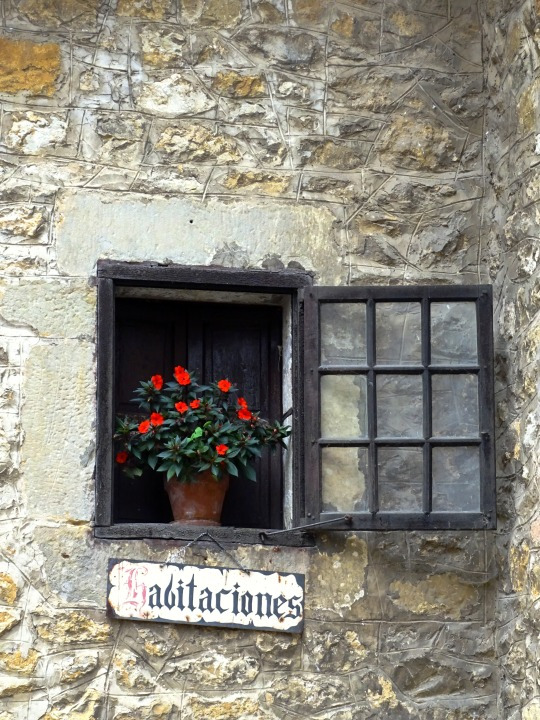

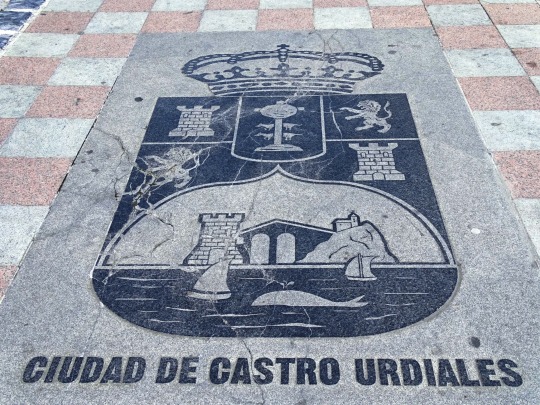








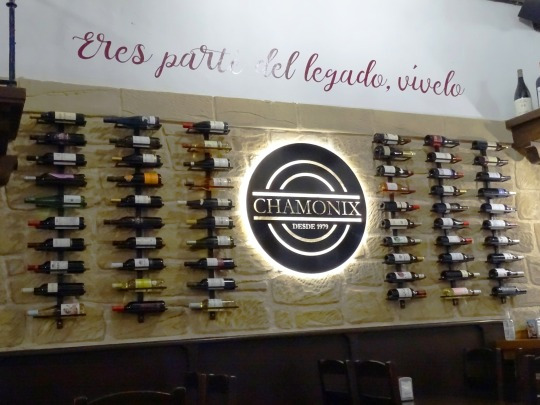
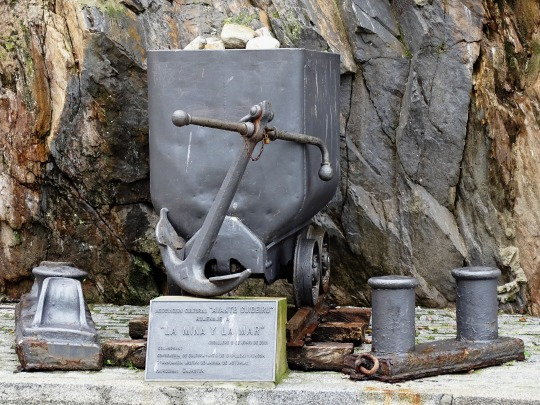
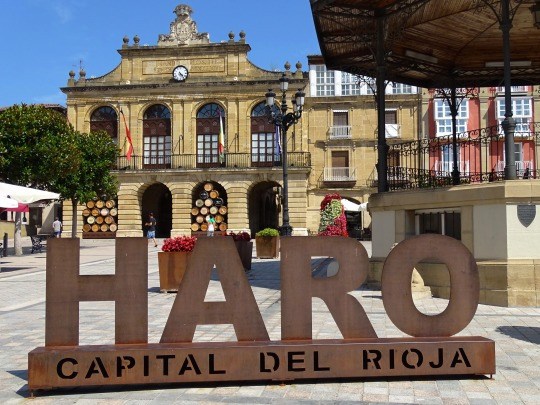
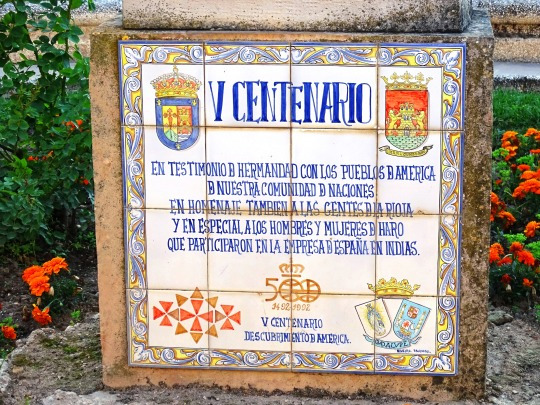
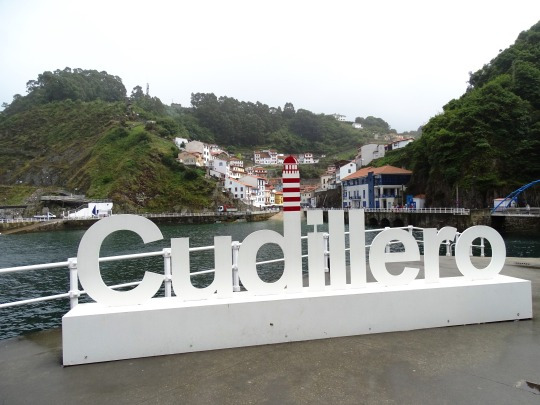
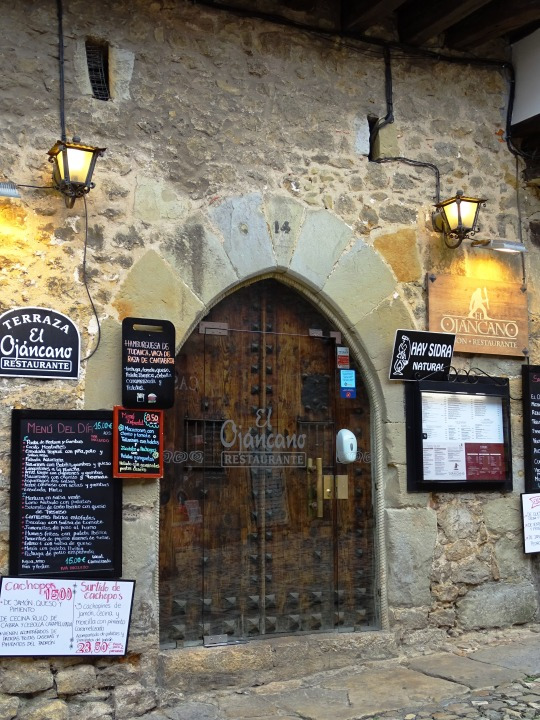
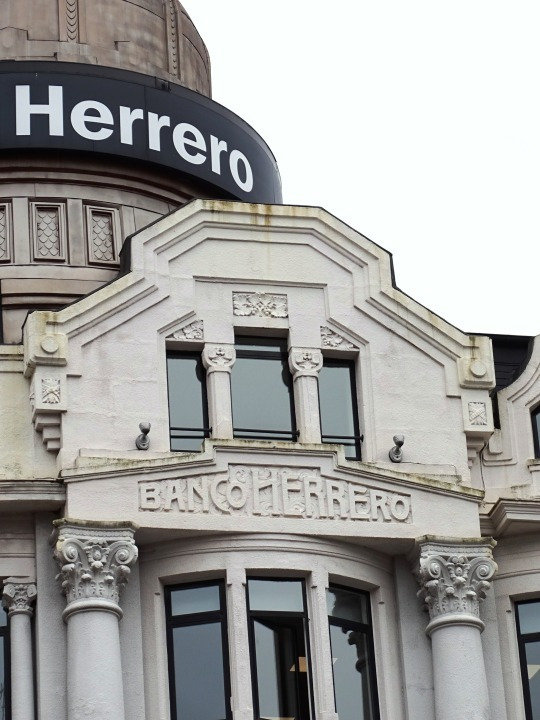
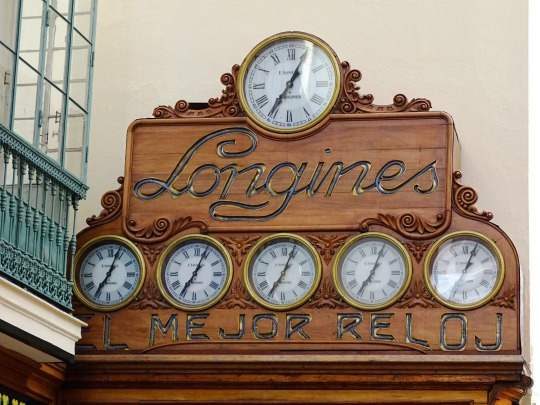
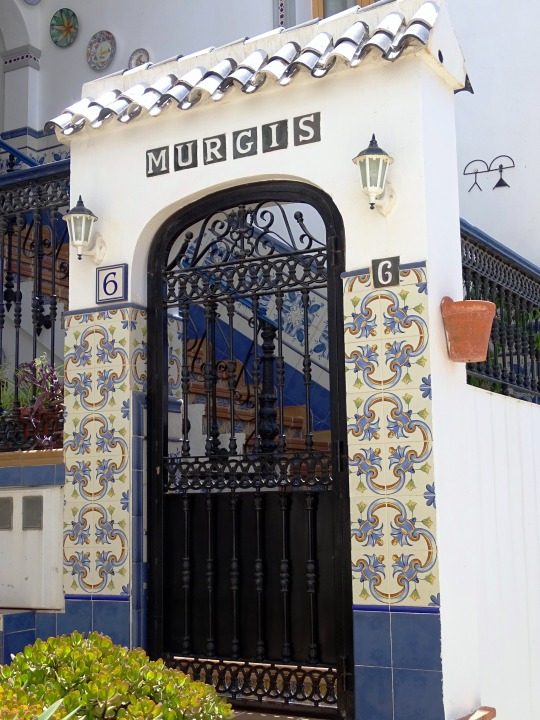
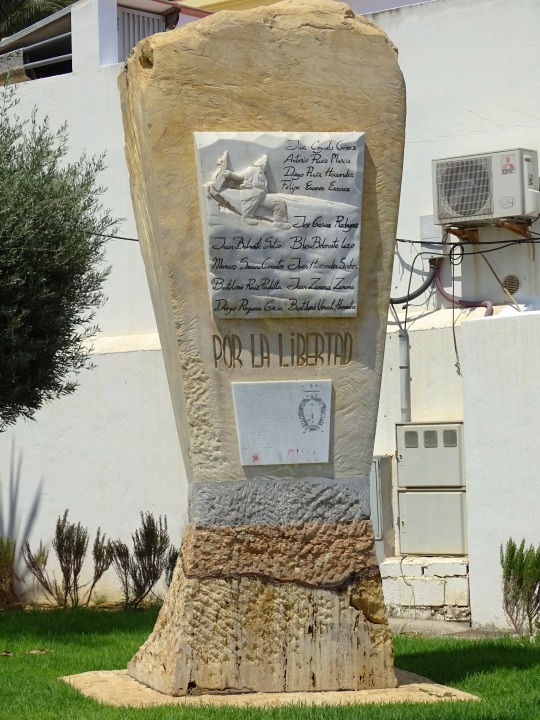
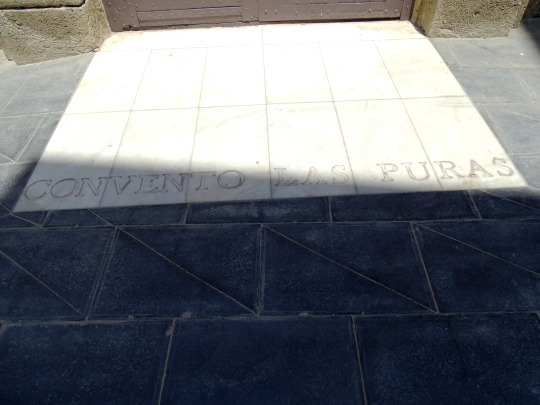

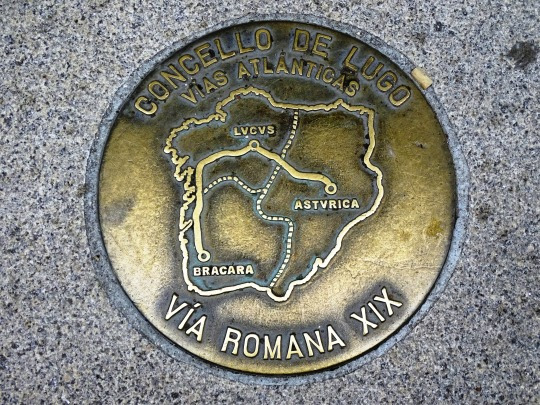

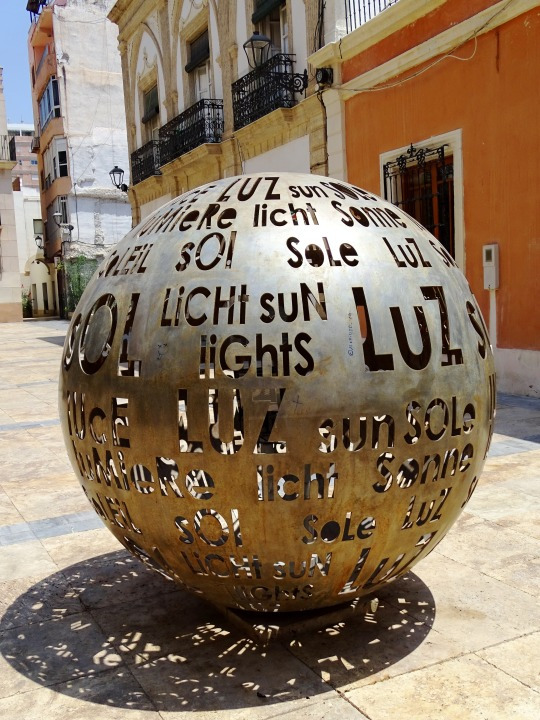
Spanish Language Day
Spanish Language Day is an annual celebration of one of the six official languages of the United Nations, marked every year on April 23. The celebration aims to promote and appreciate multi-linguism and the significance of Spanish culture in the world, especially in the Americas. This day is formally known as the U.N. Spanish Language Day as U.N. is the principal sponsor and organizer of the event.
History of Spanish Language Day
The Spanish language is part of the Indo-European language stream and takes its origin from Latin. Understanding the formation of this language is quite simple; consider Romance as the root language from which western and eastern Romance languages emerge. From Western Romance, derive Iberian which will further split into Castilian, Portuguese, and Spanish.
Tracing the history of this language, after the fall of the Roman Empire, every state began developing its dialect and script. Spanish language in its infancy is described as a mixture of crude Latin and local languages with three different stages of development. The first stage is considered during the fall of the Western Roman Empire in the 5th century and the emergence of individual kingdoms in Iberia.
The second stage was during and after the Moorish conquest of Iberia in which Arab-Berber invaders from North Africa ruled the peninsula in the ninth century. During this time, Arabic had a great influence on not only the language but also on the Iberian culture. All during this time, the language continued to evolve but still did not gain the status of being acknowledged as an actual Spanish language.
The third stage of the language’s evolution was when the Kingdom of Castile was established in the 13th century. The overthrowing of the Berbers in the land saw the local Iberians starting to restore the post-Latin roots of the language, hence giving it a proper new script and dialect which ultimately evolved into Spanish.
The Spanish conquests in the Americas and the following emergence of the Spanish Empire was the determining factor behind Spanish gaining an international language status. After the formation of the United Nations, Spanish was among the six languages chosen to be the official languages.
Spanish Language Day timeline
8th Century B.C. Ancient Rome
Rome is founded and the city develops into a city-state with its language and culture.
5th Century The Derivation of Local Languages
The romance language splits into western and eastern languages based on local influences.
1492 The First Modern Spanish
The Spanish conquests in America take the Spanish language into a new land, which develops it into a modern language.
2010 U.N. Spanish Language Day
The U.N. officially announces April 23 as Spanish Language Day.
Spanish Language Day FAQs
What other languages are celebrated by the U.N.?
The U.N. has six official languages and it celebrates all of them on six different days. The languages are English, Spanish, French, Arabic, Chinese, and Russian.
What is considered to be the best piece of Spanish literature?
Cervantes’s “Don Quixote” is considered the most emblematic work in the canon of Spanish literature.
How can I learn Spanish in a non-Spanish country?
There are many online teachers available to teach Spanish. The key element to understand is that you cannot simply learn a language without speaking or hearing it often. The most important thing while learning any language is to practice speaking the language with easy day-to-day sentences.
Spanish Language Day Activities
Give learning Spanish a shot
Study the history of this language
Explore Spanish via movies, T.V. shows, or songs
No one can learn a language in one day. However, you can try experimenting with learning Spanish, and you may continue doing so beyond the day.
Learn the history of the language and how it developed over time. Discover how it became an internationally spoken language.
A number of streaming sites host good-quality Spanish movies, T.V. shows, and music. It's no problem if you don't understand the language, just turn on the subtitles and try to comprehend the flow in Spanish and the similarity it may have with your language.
5 Interesting Facts About Spanish
A vulgar Latin
It’s spoken by 559 million people
It’s spoken in 44 countries
The status of Mexico
The influence of Arabic
Spanish is derived from Latin and Romance languages and is sometimes called a vulgar form of Latin.
Spanish is the second-most spoken language in the world, around 560 million people speak it.
Spanish is spoken in at least 44 countries and is the most spoken language in the western hemisphere.
Mexico is the largest Spanish-speaking country in the world, surprised, aren't you?
According to sources, there are around 4,000 words in Spanish with Arabic roots.
Why We Love Spanish Language Day
Easy to understand
It is a beautiful language
It is a day to celebrate Spanish
Admit it, English is the most widely understood language. For English speakers, understanding Spanish is relatively easy as the roots are primarily the same. Besides, many words have been exchanged between the languages. Normally, an English speaker would require 22 to 24 weeks to be able to speak Spanish proficiently.
Spanish is considered by many to be one of the most romantic languages. The vocabulary is diverse and has been used to express feelings of love and passion in many pieces of literature. More people try to learn Spanish than any other language, after English.
Days like these give people a refreshing change momentarily in which they get to skip their daily routine, and admire the other things happening around them. Spanish Language Day can be a great day for many people, Spanish and non-Spanish speakers, to celebrate this language by watching a Spanish movie, or T.V. show, or by simply listening to Spanish music.
Source
#Peñíscola#Calpe#Mojácar#Carboneras#Monumento a la Libertad#Spain#Castro Urdiales#Luz y Sol by Ferrer Arquitectos#Almeria#Cudillero#Lugo#Haro#Azulejo#Spanish Language Day#23 April#cityscape#public art#sculpture#España#Southern Europe#summer 2021#original photography#vacation#travel#tourist attraction#landmark#SpanishLanguageDay#architecture
1 note
·
View note
Text
Los mejores drones DJI de rescate para una respuesta rápida
Los escenarios de respuesta a emergencias apenas toman unos segundos; ya sea un incendio forestal, un desastre natural o una misión de búsqueda y rescate. Una acción precisa y rápida es lo que salva vidas y minimiza los daños. La tecnología avanzada de drones, en particular los drones de rescate DJI, ha tenido un impacto inmenso en la industria de respuesta a emergencias. Los drones de rescate DJI ofrecen datos críticos en tiempo real y una visión aérea nunca antes rivalizada en entornos tan accidentados e impredecibles. Aero Industrial Iberia es el principal distribuidor de DJI en Barcelona y Valencia, centrándose en proporcionar a los mejores rescatistas el mejor dron de rescate.
Por qué los drones DJI cambian las reglas del juego en la respuesta a emergencias
DJI se ha convertido en un referente en la industria de los drones ya que la compañía pone a prueba continuamente sus límites en la tecnología UAV. La excelencia en la calidad de la cámara, la estabilidad del control de vuelo y la transmisión de datos en tiempo real son realmente el foco de DJI, lo que hace que sus drones sean una fiebre del oro para los esfuerzos de rescate en operaciones de ritmo rápido. A continuación se detallan algunos beneficios que explican por qué los drones de rescate DJI son de gran valor en operaciones críticas:
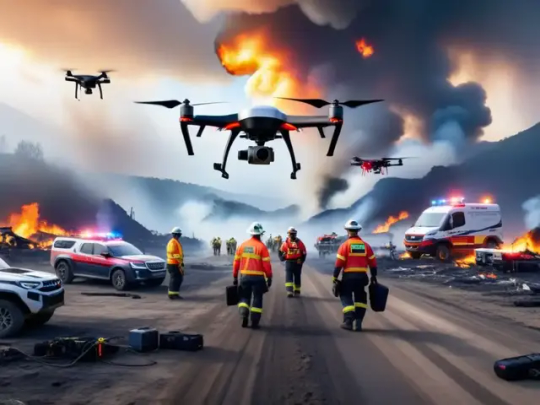
Implementación rápida: El dron DJI es fácil de implementar. De esta manera, los equipos podrán entrar rápidamente en acción, ahorrando valiosos minutos donde cada segundo cuenta.
Imágenes avanzadas: Muchos de los drones DJI tienen imágenes térmicas y cámaras de alta resolución que permitirán a las personas ver a través del humo, la niebla o el follaje espeso. Esto es importante para detectar supervivientes, localizar puntos críticos o incluso evaluar daños.
Movilidad mejorada: Los drones DJI son muy ágiles, cubren terrenos complejos y llegan a zonas inaccesibles que serían imposibles para los equipos de rescate físicos.
Recopilación y análisis de datos: Los drones DJI ofrecen herramientas avanzadas de recopilación de datos para ayudar a los rescatistas a tomar las decisiones correctas en el terreno. Es especialmente útil en una operación de gran tamaño, ya que coordina los recursos con precisión donde más se necesitan.
Los mejores drones DJI para rescate y respuesta rápida
Aero Industrial Iberia le gusta lo siguiente Drones DJI para sus misiones de rescate debido a la versatilidad, características avanzadas y durabilidad de estos dispositivos. Algunas de las opciones preferibles incluyen:
1. Serie empresarial DJI Mavic 3
El DJI Mavic 3 Enterprise es una potencia que combina imágenes de alto rendimiento con potentes capacidades operativas para ayudar a los equipos de respuesta a emergencias a completar sus misiones y servir como la herramienta definitiva para la respuesta a emergencias y las operaciones de campo. Este dron en particular tiene una configuración destacada de doble cámara, que comprende una cámara de alta resolución y un sistema de imágenes térmicas. Esto permitirá a los socorristas localizar señales de calor que serán indicativas incluso en condiciones de poca visibilidad.
Otras características que hacen que el DJI Mavic 3 Enterprise sea perfecto para una respuesta rápida incluyen
Tiempo de vuelo de 45 minutos: Largo tiempo de vuelo asegura Se recorre suficiente distancia para que la región se cubra adecuadamente.
Detección de obstáculos: Sistema de alta tecnología que previene riesgos con la utilización de sentidos intrincados.
GPS e intercambio de datos en tiempo real: Los equipos de Down pueden monitorear la ubicación del dron y obtener información crucial en tiempo real.
La serie DJI Mavic 3 Enterprise es ideal para búsqueda y rescate, detección de incendios y evaluación de desastres naturales.
2. DJI Matriz 30
El DJI Matrice 30 es otro de los favoritos de los socorristas. Diseñado para misiones duras y exigentes, este dron de grado industrial cuenta con resistencia al agua y al polvo IP55 y funciona de manera confiable en condiciones extremas. Su versatilidad de carga útil y sus potentes capacidades de imágenes térmicas lo convierten en un avión de rescate adecuado que puede durar un tiempo y proporciona precisión.
Características principales del DJI Matrice 30:
Sensores térmicos y visuales: Es útil para detectar firmas de calor y encontrar personas desaparecidas.
Sistema de batería dual: Tiene redundancia y tiempo de vuelo extendido.
Resistencia a la intemperie: Antielementos, en los que los resiste para un rendimiento óptimo.
El DJI Matrice 30 permite a los encuestados realizar sus actividades de búsqueda y rescate en áreas montañosas, boscosas o devastadas con confianza y eficiencia.
3. DJI Matriz 300 RTK
Entre los drones más avanzados que ofrece DJI, se encuentra el Matrice 300 RTK, con una precisión inigualable y una larga resistencia en vuelo. En realidad, este dron fue diseñado pensando en los socorristas y está lleno de características específicas diseñadas para ayudar en rescates complejos. Gracias a su diseño y capacidad, puede admitir múltiples cargas útiles y permitir configuraciones personalizadas de los requisitos de la misión.
Características principales del DJI Matrice 300 RTK
Estas son algunas de las características clave del DJI Matrice 300 RTK:
Tiempo máximo de vuelo de 55 minutos: Esto proporciona una cobertura completa de un área.
Seguimiento avanzado de IA y evitación de obstáculos: Permite una navegación segura sobre obstáculos.
Flexibilidad de carga útil: Admite cámaras termográficas, lentes con zoom y LiDAR, lo que lo convierte en uno de los drones más adaptables para cualquier emergencia.
Los rescatistas podrían permanecer conscientes de la situación en la evaluación de peligros y optimizar el despliegue de recursos utilizando el DJI Matrice 300 RTK, lo que lo convierte en una de las mejores opciones para Aero Industrial Iberia ofertas de respuesta rápida. Así, con DJI como mavic 3 empresa, Matrice 30, and Matrice 300 RTK, es evidente que las operaciones de respuesta a emergencias cambian drásticamente hacia un despliegue rápido, imágenes de precisión e intercambio de datos en tiempo real. Con la cartera de Drones DJI En Aero Industrial Iberia, los socorristas están completamente equipados en respuesta y actividades de respuesta, por lo que están bien preparados para los esfuerzos de rescate más duros. Ésta no es una lista exhaustiva; Visita las ofertas de Aero Industrial Iberia para saber más sobre los drones de rescate DJI y despega en mejorar tus capacidades de respuesta rápida con los mejores drones de rescate del mercado.
#tienda drones Valencia#drones industriales#tienda drones Barcelona#mavic#enterprise dji#matrice 30#drones para la seguridad pública#DJI Store#Dji Drone Store Spain#Dji Drone
0 notes
Text
Events 12.7 (after 1960)
1962 – Prince Rainier III of Monaco revises the principality's constitution, devolving some of his power to advisory and legislative councils. 1963 – Instant replay makes its debut during the Army-Navy football game in Philadelphia, Pennsylvania, United States. 1965 – Pope Paul VI and Patriarch Athenagoras I simultaneously revoke mutual excommunications that had been in place since 1054. 1971 – The Battle of Sylhet is fought between the Pakistani military and the Indian Army. 1971 – Pakistan President Yahya Khan announces the formation of a coalition government with Nurul Amin as Prime Minister and Zulfikar Ali Bhutto as Deputy Prime Minister. 1972 – Apollo 17, the last Apollo Moon mission, is launched. The crew takes the photograph known as The Blue Marble as they leave the Earth. 1982 – In Texas, Charles Brooks Jr., becomes the first person to be executed by lethal injection in the United States. 1982 – The Senior Road Tower collapses in less than 17 seconds. Five workers on the tower are killed and three workers on a building nearby are injured. 1983 – An Iberia Airlines Boeing 727 collides with an Aviaco DC-9 in dense fog while the two airliners are taxiing down the runway at Madrid–Barajas Airport, killing 93 people. 1987 – Pacific Southwest Airlines Flight 1771, a British Aerospace 146-200A, crashes near Paso Robles, California, killing all 43 on board, after a disgruntled passenger shoots his ex-boss traveling on the flight, then shoots both pilots and steers the plane into the ground. 1988 – The 6.8 Ms Armenian earthquake shakes the northern part of the country with a maximum MSK intensity of X (Devastating), killing 25,000–50,000 and injuring 31,000–130,000. 1993 – Long Island Rail Road shooting: Passenger Colin Ferguson murders six people and injures 19 others on the LIRR in Nassau County, New York. 1995 – The Galileo spacecraft arrives at Jupiter, a little more than six years after it was launched by Space Shuttle Atlantis during Mission STS-34. 1995 – Khabarovsk United Air Group Flight 3949 crashes into the Bo-Dzhausa Mountain, killing 98. 1995 – An Air Saint Martin (now Air Caraïbes) Beechcraft 1900 crashes near the Haitian commune of Belle Anse, killing 20. 2003 – The Conservative Party of Canada is officially registered, following the merger of the Canadian Alliance and the Progressive Conservative Party of Canada. 2005 – Rigoberto Alpizar, a passenger on American Airlines Flight 924 who allegedly claimed to have a bomb, is shot and killed by a team of U.S. federal air marshals at Miami International Airport. 2015 – The JAXA probe Akatsuki successfully enters orbit around Venus five years after the first attempt. 2016 – Pakistan International Airlines Flight 661, a domestic passenger flight from Chitral to Islamabad, operated by an ATR-42-500 crashes near Havelian, killing all 47 on board. 2017 – Aztec High School shooting: Former student William Atchison opens fire on former high school, killing 2.
0 notes
Text
¿Cómo llamar a Iberia por WhatsApp?
¿Cómo llamar a Iberia por WhatsApp?
Si te has preguntado "¿Cómo llamar a Iberia por WhatsApp?" aquí tienes la información que necesitas. Iberia ofrece una línea de contacto directa a través de WhatsApp, permitiendo a sus clientes resolver dudas o recibir asistencia sin necesidad de hacer llamadas telefónicas. Esta opción es ideal para quienes buscan respuestas rápidas y eficaces. Puedes comunicarte con ellos usando los números de atención al cliente +34-910-80-76-70 o +34-676-67-60-04.
Ventajas de Contactar a Iberia por WhatsApp
La ventaja principal de usar WhatsApp para comunicarte con Iberia es la comodidad de resolver tus inquietudes desde tu móvil. Preguntarse "¿Cómo llamar a Iberia por WhatsApp?" es común, ya que la mayoría de los usuarios buscan la forma más rápida y eficaz de obtener respuestas. A través de los números de contacto +34-910-80-76-70 o +34-676-67-60-04, Iberia facilita el acceso a información sobre vuelos, cambios de reservas y otros servicios.
Pasos para Contactar a Iberia por WhatsApp
Para contactar con Iberia por WhatsApp, guarda en tu dispositivo uno de los números de atención de Iberia, ya sea +34-910-80-76-70 o +34-676-67-60-04. Luego, abre la aplicación de WhatsApp y envía tu mensaje de consulta. Con estos pasos simples, obtendrás respuestas rápidas sin preocuparte de tiempos de espera telefónica. Recuerda, la pregunta "¿Cómo llamar a Iberia por WhatsApp?" se responde fácilmente siguiendo estos pasos, lo que hace que la experiencia del usuario sea rápida y satisfactoria.
Disponibilidad de Atención por WhatsApp de Iberia
La asistencia de Iberia a través de WhatsApp está disponible para ayudarte en cualquier momento durante los horarios establecidos de atención. Saber "¿Cómo llamar a Iberia por WhatsApp?" permite a los viajeros estar en contacto con la aerolínea sin importar dónde se encuentren.
0 notes
Text
FLORIAN KRUMPÖCK
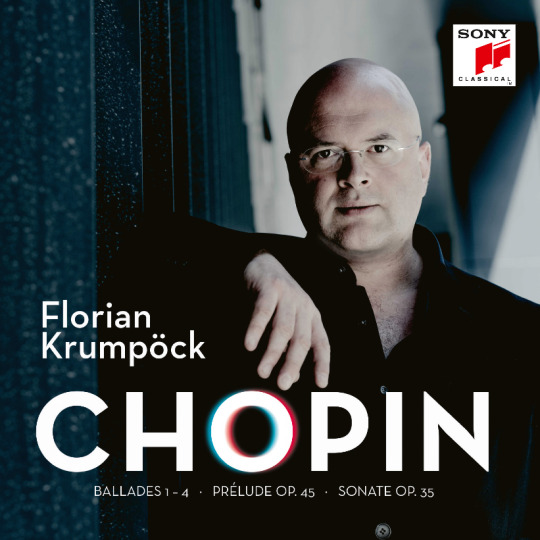
CHOPIN
El director y pianista Florian Krumpöck, presentará el disco Chopin en la Sala Manuel de Falla del Palacio Longoria, sede de la SGAE.
El recital de Krumpöck tendrá lugar el 17 de abril. Además de la música de Chopin, el pianista ha querido incorporar al concierto la segunda de las Tres piezas académicas de Ricardo Llorca y algunos números de la suite Iberia de Albéniz.
Consigue el álbum AQUÍ
Florian Krumpöck, pianista, director de orquesta y director de festivales austriaco, eligió las famosas Baladas para piano nº 1-4 de Frédéric Chopin, así como su 2ª Sonata para piano, para su primera grabación con el sello Sony Classical.
El resultado no se corresponde en absoluto con los clichés habituales y permite que surja un mundo sonoro completamente independiente. Libre de cursilerías y manierismos anticuados, se crea una atmósfera que muestra hasta qué punto las melodías de Chopin están influidas por la ópera italiana, especialmente el bel canto.
Sin embargo, nunca se descuidan las voces de acompañamiento: comentan, contrarrestan, apoyan las "líneas vocales". Se utilizaron intencionadamente dos pianos diferentes: un Bösendorfer Imperial lleno y rico en armónicos para el Prélude y las Ballades, y un Bösendorfer 280 más claro y "moderno" para la 2ª Sonata para piano. El propio Krumpöck describe su ideal sonoro de la siguiente manera: "Apasionado, masculino, como decía Rubinstein, eslavo, no francés. Y, sobre todo, ¡nunca sentimental!"
Solista, acompañante de canto, director de orquesta... Florian Krumpöck está presente en todas estas facetas en los escenarios de conciertos de todo el mundo. Tras las sensacionales críticas recibidas en su debut como solista en la Tonhalle de Zúrich con la Orquesta Sinfónica de la Radio de Moscú bajo la dirección de Vladimir Fedoseyev, fue invitado a actuar en Viena, Salzburgo, Múnich y Moscú, entre otros lugares, así como en Israel, EE.UU., China y Corea del Sur.
Los exitosos recitales como solista en festivales internacionales como los de Salzburgo y Bregenz, el Musiksommer Bad Kissingen, el Bachfest Leipzig, el Musikfestspiele Mecklenburg-Vorpommern y el Wiener Klangbogen consolidaron su carrera posterior. Por sugerencia de su mentor, Daniel Barenboim, Florian Krumpöck amplió su repertorio a obras sinfónicas y óperas, y se dedicó cada vez más a la dirección de orquesta. Además de ocupar puestos de director invitado en orquestas como la Orquesta Sinfónica de Jerusalén, la Orquesta de Filadelfia, la Sinfónica de Viena y la Filarmónica Estatal de Nuremberg, acabó ocupando el puesto de director principal de la Filarmónica del Norte de Alemania.
Otros compromisos como director invitado también han llevado a Florian Krumpöck con regularidad a los teatros de ópera de Barcelona, Toulouse o Montpellier, donde ha trabajado con solistas como Angelika Kirchschlager, Michael Schade, Juan Diego Flórez y Piotr Beczała. Desde el verano de 2015, Florian Krumpöck es también director artístico del Kultur.Sommer. Semmering austriaco.
En la primavera de 2024 está prevista una extensa gira por cerca de 30 ciudades europeas con el repertorio de Chopin del debut de Sony. En los países de habla alemana, Krumpöck actuará en la Konzerthaus de Berlín, la Elbphilharmonie de Hamburgo y la Herkulessaal de Múnich, la Tonhalle de Zúrich, la Victoria Halle de Ginebra y la KKL de Lucerna. En Austria, el programa incluye el Mozarteum de Salzburgo, la Stefaniensaal de Graz y el Musikverein de Viena. El 17 de mayo, Florian Krumpöck debutará en el Carnegie Hall de Nueva York continuando con su gira de presentación.
FLORIAN KRUMPÖCK
INSTAGRAM FACEBOOK YOUTUBE TWITTER WEBSITE SPOTIFY
1 note
·
View note
Text
¿Cuál es la mejor manera de viajar de Andorra a Tenerife hoy?
🎰🎲✨ ¡Obtén 500 euros y 200 giros gratis para jugar juegos de casino con solo un clic! ✨🎲🎰
¿Cuál es la mejor manera de viajar de Andorra a Tenerife hoy?
Transporte aéreo desde Andorra a Tenerife
El transporte aéreo desde Andorra a Tenerife es una opción conveniente y eficiente para viajar entre estos dos destinos. A pesar de que Andorra no cuenta con un aeropuerto propio, los viajeros pueden optar por volar desde los aeropuertos cercanos como el Aeropuerto de Barcelona-El Prat o el Aeropuerto de Toulouse-Blagnac y llegar a Tenerife, una de las islas más populares de las Islas Canarias.
Las aerolíneas como Vueling, Iberia o Air Europa ofrecen vuelos directos o con escalas entre Barcelona o Toulouse y Tenerife. Los precios de los vuelos pueden variar según la temporada y la antelación con la que se realice la reserva, pero en general, es posible encontrar opciones accesibles para llegar a este destino paradisíaco.
Una vez en Tenerife, los viajeros pueden disfrutar de sus playas de arena negra volcánica, su clima subtropical y sus paisajes impresionantes, como el Teide, el pico más alto de España. Además, la isla ofrece una amplia variedad de actividades y lugares de interés como parques naturales, pueblos pintorescos y una rica gastronomía local.
En resumen, el transporte aéreo desde Andorra a Tenerife brinda la oportunidad de vivir una experiencia inolvidable, conectando dos destinos únicos y permitiendo a los viajeros disfrutar de todo lo que la isla tiene para ofrecer. ¡No dudes en planificar tu próximo viaje a Tenerife y descubrir todo lo que este lugar mágico tiene reservado para ti!
Ruta en coche de Andorra a Tenerife
Desde la majestuosa belleza de los Pirineos hasta las paradisíacas playas de Tenerife, una ruta en coche de Andorra a Tenerife ofrece una experiencia inolvidable llena de paisajes impresionantes y diversidad cultural.
El viaje comienza en Andorra, un pequeño país situado entre Francia y España, conocido por sus montañas escarpadas y encantadores pueblos rurales. Conducir a través de los serpenteantes caminos de montaña de Andorra ofrece vistas panorámicas impresionantes que dejarán sin aliento a cualquier viajero.
A medida que se desciende de los Pirineos, se atraviesa España y se llega a la costa mediterránea, donde se puede disfrutar de deliciosos platos de mariscos y relajarse en las playas de arena blanca. El viaje continúa hacia el sur, atravesando ciudades históricas como Valencia y Granada, con su rica arquitectura y cultura.
Finalmente, después de recorrer la costa sur de España, se llega al puerto de Los Cristianos en Tenerife, donde se puede disfrutar del clima cálido y las impresionantes playas de la isla. Tenerife ofrece una amplia gama de actividades, desde practicar surf en El Médano hasta explorar el majestuoso Parque Nacional del Teide.
En resumen, una ruta en coche de Andorra a Tenerife es una aventura que combina la belleza natural de los Pirineos con la diversidad cultural y las impresionantes playas de Tenerife. ¡No dudes en embarcarte en esta emocionante travesía para descubrir lo mejor que la Península Ibérica tiene para ofrecer!
Transporte público desde Andorra a Tenerife
El transporte público desde Andorra a Tenerife puede ser una opción práctica para aquellos que deseen disfrutar de un viaje sin complicaciones. Aunque la distancia entre estos dos destinos es considerable, existen diversas alternativas para facilitar el traslado.
Una forma de llegar a Tenerife desde Andorra utilizando el transporte público es combinar diferentes medios de transporte. En primer lugar, se puede tomar un autobús desde Andorra hasta Barcelona, donde se encuentra el aeropuerto principal más cercano. Desde allí, se puede tomar un vuelo hacia Tenerife, ya sea al aeropuerto de Tenerife Norte o Tenerife Sur.
Otra opción es viajar en autobús desde Andorra hasta una ciudad cercana con conexiones ferroviarias, como Barcelona o Madrid. Una vez en estas ciudades, se puede tomar un tren hacia un aeropuerto con vuelos directos a Tenerife.
Para aquellos que prefieran una opción más directa, también existe la posibilidad de contratar servicios de transporte privado que realicen el trayecto completo desde Andorra hasta Tenerife.
En resumen, aunque el transporte público desde Andorra a Tenerife puede implicar varias etapas y combinaciones de medios de transporte, es posible planificar un viaje cómodo y sin contratiempos para disfrutar de todo lo que la isla canaria tiene para ofrecer.
Viaje en ferry de Andorra a Tenerife
Viajar en ferry de Andorra a Tenerife es una experiencia única que combina la emoción de navegar por el océano con la comodidad de explorar nuevas tierras. Este trayecto marítimo te llevará desde la tranquilidad de los Pirineos, en Andorra, hasta la exuberante isla de Tenerife, en las Islas Canarias.
El viaje en ferry te ofrece la oportunidad de disfrutar de impresionantes vistas panorámicas del mar mientras te relajas a bordo y disfrutas de los servicios que el barco tiene para ofrecer. Podrás saborear exquisitos platos regionales en los restaurantes a bordo, disfrutar de una bebida en el bar o simplemente admirar el paisaje desde la cubierta.
Una vez llegues a Tenerife, te recibirán las cálidas temperaturas y la hospitalidad de sus habitantes. Podrás explorar las playas de arena dorada, descubrir la rica historia y cultura de la isla, y maravillarte con la majestuosidad del Teide, el pico más alto de España.
No importa si viajas en pareja, en familia o con amigos, un viaje en ferry de Andorra a Tenerife te permitirá vivir una experiencia inolvidable llena de nuevos paisajes, sabores y momentos para atesorar. ¡Prepárate para embarcarte en esta emocionante travesía y descubrir todo lo que Tenerife tiene para ofrecer!
Combinaciones de transporte para ir de Andorra a Tenerife
Cuando se trata de planificar un viaje de Andorra a Tenerife, es fundamental considerar las diferentes combinaciones de transporte disponibles para llegar a tu destino de forma eficiente y cómoda. Dada la distancia entre estos dos destinos, es necesario combinar varios medios de transporte para completar el trayecto.
Una opción común es comenzar el viaje en autobús desde Andorra hasta Barcelona. En Barcelona, puedes tomar un vuelo directo al aeropuerto de Tenerife Sur. Esta combinación te permite llegar a Tenerife en un tiempo relativamente corto y sin complicaciones, especialmente si prefieres evitar largas horas de viaje en carretera.
Otra alternativa es tomar un autobús desde Andorra hasta una ciudad costera cercana, como Barcelona o Valencia, y luego embarcar en un ferry que te lleve a Tenerife. Aunque esta opción puede resultar más larga y requerir más escalas, puede ser una experiencia única y pintoresca, ya que tendrás la oportunidad de disfrutar del paisaje marítimo durante el trayecto en barco.
Por último, si prefieres un enfoque más directo, puedes optar por alquilar un coche en Andorra y conducir hasta un puerto cercano para embarcar en un ferry que te lleve directamente a Tenerife. Esta opción te brinda mayor flexibilidad y autonomía durante el viaje, permitiéndote explorar diferentes lugares a lo largo del camino.
En resumen, las combinaciones de transporte para ir de Andorra a Tenerife son variadas y ofrecen opciones para adaptarse a tus preferencias de viaje. Ya sea por aire, tierra o mar, seguro encontrarás la mejor manera de llegar a este hermoso destino insular en el Atlántico. ¡Prepara tu itinerario y disfruta de una emocionante aventura desde Andorra a Tenerife!
0 notes
Text
Hoy me ha dado..por comprar una novedad en el MERCADONA que es una bebida ENERGETICA llamada ZERO que está decorada con una MASCARA tipo MAYA y está fabricada por REFRESCO "IBERIA" [ESPAÑA+PORTUGAL sin CASA REAL ni PONTIFEX =ROMA..pero con LUZ O CRISTO=AMOR o ROMA AL REVES] en Oliva [VALENCIA]..lo anterior significativo que recordado ha sido foto en el bar LA FE DE MARIA music bar [antes TERRANOVA cuando iba a tomar la 1era copa con RAMON VALLE_INCLAN hijo del Ex_presidente DE TABACALERA Miguel Angel..al que sustituyo el imputado por corrupcion Cesar Alierta junto a su malograda mujer Domingo de Resurreccion Ana Cristina "PLACER" con la que no tuvo hijos..y a la que sustituyo ISABEL SARTORIUS ex novia de FELIPE VI y a la que puso un piso] adjunto al entonces AMOR BRUJO luego CAPRICHO en calle PRINCIPE DE VERGARA.
Por cierto..es de sabor WATER_MELON..y creo que este MELON se acabará por ABRIR con AGUA
Luego también recordé la foto de DANI MARTIN de EL CANTO DEL LOCO con camiseta de componentes de Motos DEUS EX MACHINE [=resolución de una trama saltándose la logica] VIRGINIA MAESTRO en ZAHARA [=cantante del cd SANTA y cd PUTA]..donde murió de improviso Javier KRAHE [que toco como grupo DINERO en SEVILLA cuando yo estaba celebrando mi 43 cumple=28_11_14].. procesado por cocinar un CRISTO y emitirlo por TV..especializado en canciones sobre frustraccion SEXUAL..siendo un fumata casado y borrachín
Posteriormente cuando volví de mercadona me di cuenta de que justo antes del post de VIRGINIA MAESTRO tocando en el MATADERO de MADRID para niños de 5 años que ella parece que nunca tendrá..siendo una de las promotoras para que puedan entrar los niños en locales cerrados o al aire libre lleno de borrachos, fumadores , escuchando cosas de adultos, etc..y Molestando ..hablaba en el periódico 20 MINUTOS del VERTIGO que sintió al hacer el CROWDFUNDING y que la ofrecieron una SUMA INTERESANTE POR DESNUDARSE
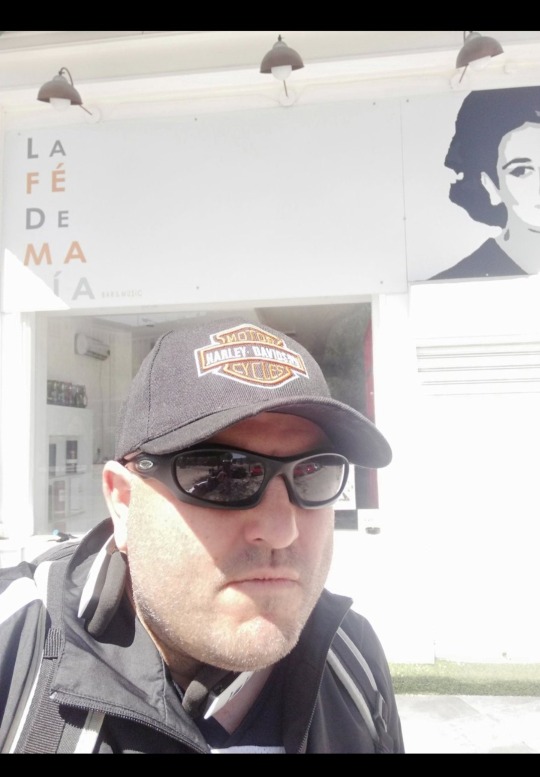







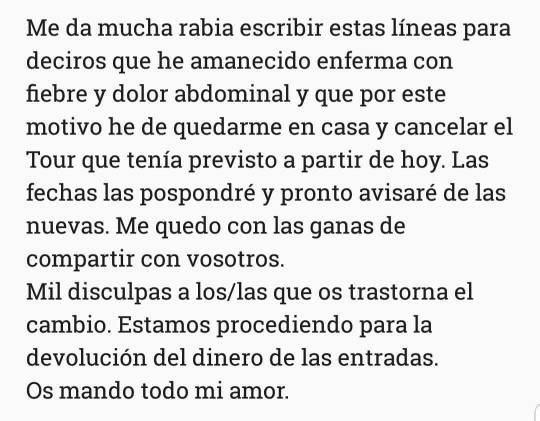
0 notes
Text
Viajar en avión da alas

La aerolínea Iberia Express vuela alto. Está de enhorabuena. En el Tenerife Norte-Ciudad de La Laguna, ha recibido de la consultora Cirium el premio a la más puntual de Europa en 2023. Durante cinco años consecutivos (2014-2018) lo fue entre las de bajo coste del mundo. Este periódico ha conversado con su directora comercial, Isabel Rodríguez.
-¿Cómo es la hoja de ruta de Iberia Express? “Hemos alcanzado el hito de ser la compañía de bajo coste líder en el aeropuerto de Madrid, por encima de nuestro principal competidor, que es Ryanair. Transportamos más de 7,2 millones de pasajeros durante todo el año. Hemos operado 41.000 vuelos y hemos sido la aerolínea más puntual de Europa. Esto último también es muy importante para nosotros, porque hasta 2022 habíamos sido la aerolínea más puntual dentro del mercado de las aerolíneas de bajo coste”.
-¿Cuál es su modelo? “Iberia Express trabaja un modelo híbrido, pionero en el sector de las aerolíneas”.
-¿En qué consiste? “Al final, lo que hace es combinar el rendimiento de un modelo de low cost en términos de eficiencia y utilización de la flota con las ventajas de una compañía de red. Ofrecemos conexiones, tenemos servicio business [preferente], además de un programa de fidelización adherido al Iberia Plus y nuestro propio Club Express”.
-Respecto a la matriz, Iberia, ¿cuáles son los principales rasgos distintivos? “Principalmente, operamos en corto y medio radio. Al mismo tiempo, la disciplina de coste está muy arraigada desde nuestros inicios. Tenemos esa eficiencia en términos de utilización de la flota, del número de horas que utilizamos nuestros activos más caros. Eso hace que podamos ofrecer unos precios mucho más competitivos, lo cual no implica un servicio de low cost. Nuestras tarifas incluyen maleta a bordo, hay entretenimiento, clase business, maleteros XL... Invertimos en aviones de última generación”.
-¿Esta compañía cobra por el equipaje de mano? ¿El precio marcado es el definitivo? “El precio que ofrecemos es el definitivo, sí. Incluye una maleta de cabina de hasta 10 kilos y unas medidas concretas. Vendemos maletas de más kilos para facturar”.
-Hablemos del plan de vuelo para las fechas inmediatas… “Para este verano vamos a incrementar nuestra capacidad un 8% en relación a 2023. Y, si lo comparamos con la prepandemia, será un tercio superior. Para Canarias, concretamente, incrementamos la capacidad un 15% en términos de asientos, que es un 40% sobre 2019. Más de dos millones de asientos, a partir del 30 de marzo. En el periodo comprendido entre el 15 de junio y el 15 de septiembre abriremos las rutas estacionales: Tenerife-Oviedo y Tenerife-Vigo con dos frecuencias semanales en los meses centrales. Iberia Express también recupera Bari, Creta, Edimburgo y Reikiavik, y aumenta la capacidad en las conexiones con ciudades europeas como Ámsterdam, Berlín, Dublín, Manchester y Nápoles. Con motivo de la Semana Santa, del 21 de marzo al 1 de abril, Iberia Express aumenta la capacidad en cerca de 26.200 asientos: 150 vuelos adicionales. En Canarias, particularmente, suma 96 vuelos y más de 16.900 plazas”.
-La competencia es un aliciente más que un inconveniente, ¿no? Un estímulo… “Sabemos que cuando entra un nuevo competidor se produce un impacto en el mercado. Nuestras estimaciones están en línea con la realidad. Esto es bueno para todos, aprendemos a mejorar. Iberia Express ha venido reforzado su interés por Canarias desde que comenzamos a operar, en 2013”.
-¿Cuál es la distancia más larga que recorre Iberia Express? “La ruta con Tel Aviv. Iberia Express opera tanto vuelos nacionales como internacionales. El 40% de nuestra capacidad se destina a Canarias; alrededor del 20%, a Baleares. En la península, Madrid, Málaga y Sevilla. El resto, vuelos internacionales: El Cairo, Dublín, Londres, Marrakech... Compartimos código con Iberia y otras aerolíneas”.
-¿La sostenibilidad da alas? “Uno de nuestros grandes proyectos dentro del grupo IAG es el compromiso para conseguir las cero emisiones netas en 2050. A día de hoy, el 50% de nuestra flota son aviones de nueva generación, A321neo, que consumen en torno a un 18% menos de combustible”.
-¿Y las tarifas? “Nuestra tarifa mínima en el mercado de Canarias es de 40 euros para no residentes y ya con las tasas aeroportuarias. En 2013 eran 90 euros. Ahora mismo, un vuelo para Gran Canaria desde Madrid, la ida el 3 de abril y la vuelta el 11, sale por 47,38 euros sin el descuento de residente”.

0 notes
Link
0 notes